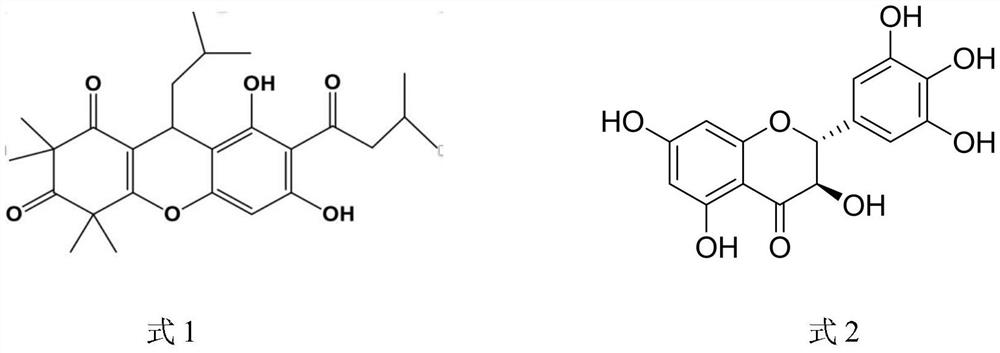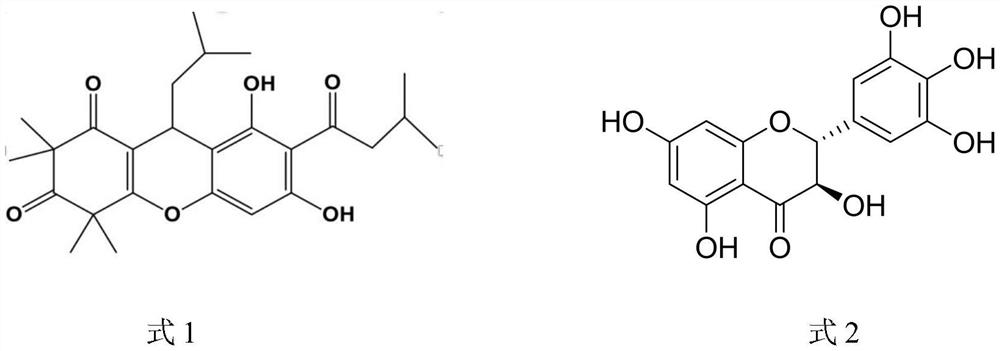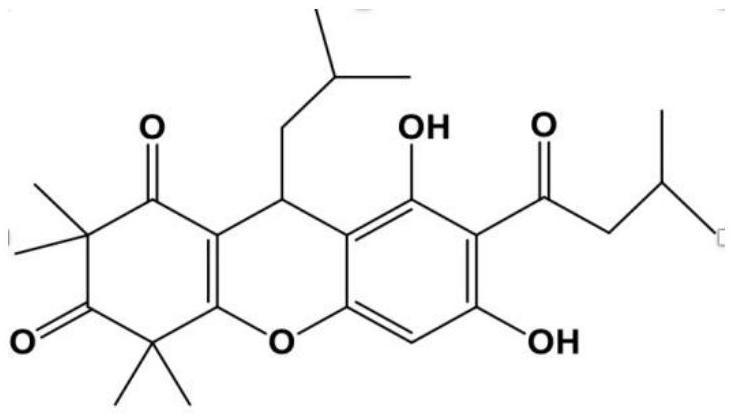Plant-derived natural bacteriostatic agent or preservative and application thereof
A natural bacteriostatic agent and preservative technology, applied in the fields of application, food ingredients containing natural extracts, preparations for toiletry, etc., can solve the problem that there is no relevant report on the synergistic effect of antibacterial ingredients on preservatives, etc.
- Summary
- Abstract
- Description
- Claims
- Application Information
AI Technical Summary
Problems solved by technology
Method used
Image
Examples
Embodiment 1
[0021] Example 1: Isolation and acquisition of myrtone compounds from Myrtaceae plant species
[0022] 1.1 Plant material
[0023] Myrtle, a plant of the genus Myrtle in the Myrtaceae family, was used as the experimental material. The plant is widely distributed in southern my country, especially in the south of the Five Ridges. The plant material used in this experiment was collected from Nankang County (District), Ganzhou City, Jiangxi Province. It was identified as R.tomentosa, a plant of the genus Myrtle in the family Myrtaceae, by Wang Faguo, a researcher at the South China Botanical Garden of the Chinese Academy of Sciences. The plant specimens are now deposited in the Natural Products and Chemical Biology Research Laboratory of South China Botanical Garden, Chinese Academy of Sciences.
[0024] 1.2 Experimental Instruments and Reagents
[0025] The optical rotation data were determined by Perkin-Elmer 341 polarimeter (Perkin-Elmer, USA). The ultraviolet spectrum was ...
Embodiment 2
[0032] Embodiment 2: Dihydromyricetin compound is obtained from the isolation of Vitis vinifera species
[0033] 2.1 Plant material
[0034] The plant material was collected from Dayu County, Ganzhou City, Jiangxi Province. It was identified as Ampelopsis grossedentata (Hand.-Mazz.) W.T.Wang by researcher Wang Faguo of the South China Botanical Garden of the Chinese Academy of Sciences. The plant specimens are now deposited in the Natural Products and Chemical Biology Research Laboratory of South China Botanical Garden, Chinese Academy of Sciences.
[0035] 2.2 Experimental Instruments and Reagents
[0036] 1.2 with embodiment 1.
[0037] 2.3 Obtaining the extract
[0038] Weigh 250g of dried leaves of Grape dentatus bud heads, add them to 90% ethanol aqueous solution by volume fraction, soak for half an hour, reflux twice at 55°C for 40 minutes each time; filter while hot, and concentrate under reduced pressure to remove ethanol , placed for 1d, after the pale yellow gran...
Embodiment 3
[0043] Embodiment 3: antibacterial activity detection
[0044] The present invention selects the microdilution method with high sensitivity and can quantitatively detect the bacteriostatic activity of the drug in vitro, that is, the minimum inhibitory concentration (MIC) is used to evaluate the bacteriostatic activity of the extract, compound 1 and compound 2. The minimum inhibitory concentration (MIC) of the compounds was determined by the resazurin chromogenic method. Resazurin is a blue non-fluorescent dye, which can be reduced to a pink fluorescent dye by a variety of reductases in living cells, while inactive cells cannot metabolize it. This method reflects the antibacterial ability of the extract through the change of the color of the bacterial liquid—after co-cultivating the indicator, the extract, and the bacterial liquid for a certain period of time, if the bacterial liquid turns red, it indicates that the compound has no antibacterial activity; Has antibacterial act...
PUM
| Property | Measurement | Unit |
|---|---|---|
| NMR spectroscopy | aaaaa | aaaaa |
Abstract
Description
Claims
Application Information
 Login to View More
Login to View More - Generate Ideas
- Intellectual Property
- Life Sciences
- Materials
- Tech Scout
- Unparalleled Data Quality
- Higher Quality Content
- 60% Fewer Hallucinations
Browse by: Latest US Patents, China's latest patents, Technical Efficacy Thesaurus, Application Domain, Technology Topic, Popular Technical Reports.
© 2025 PatSnap. All rights reserved.Legal|Privacy policy|Modern Slavery Act Transparency Statement|Sitemap|About US| Contact US: help@patsnap.com



